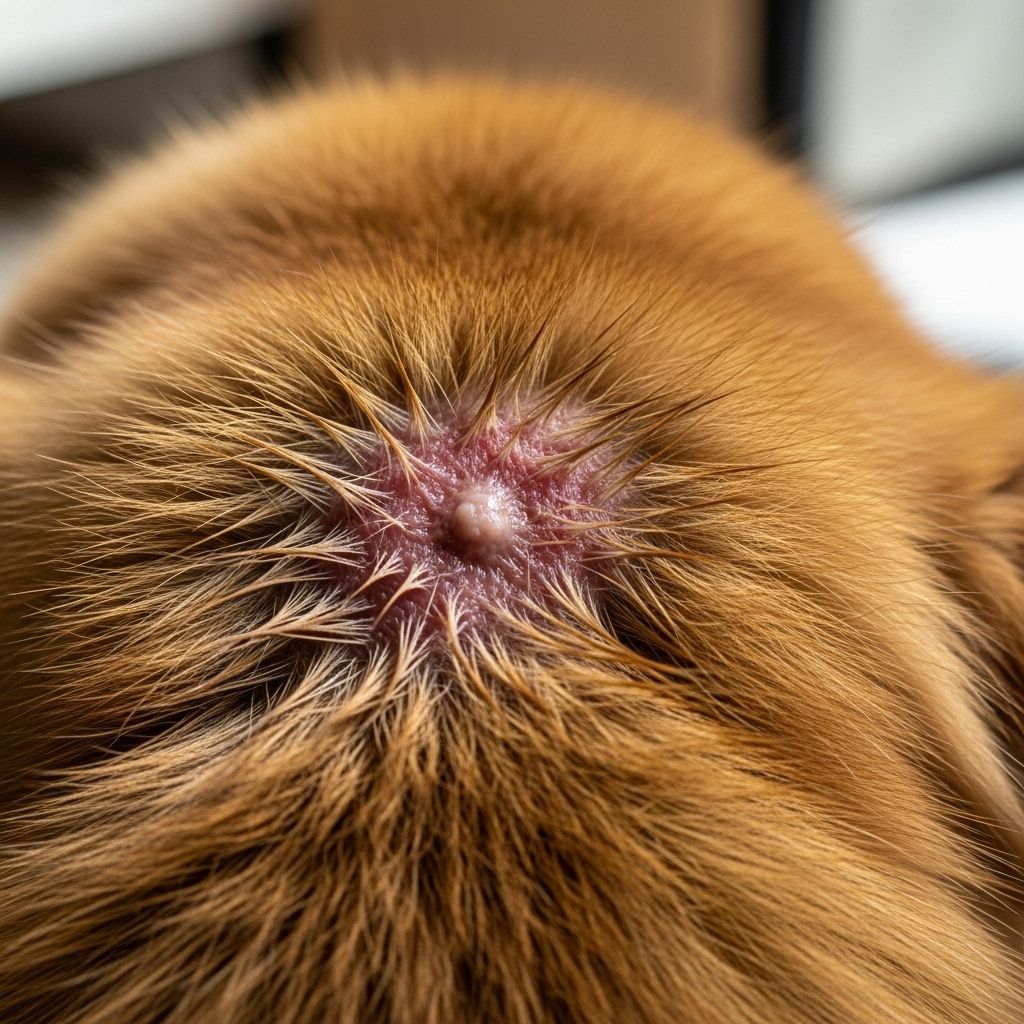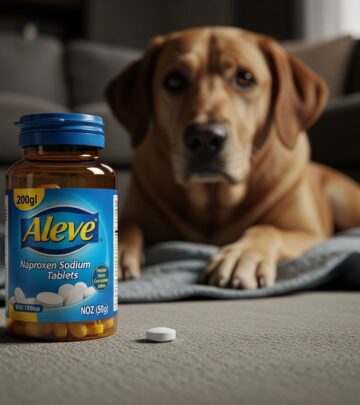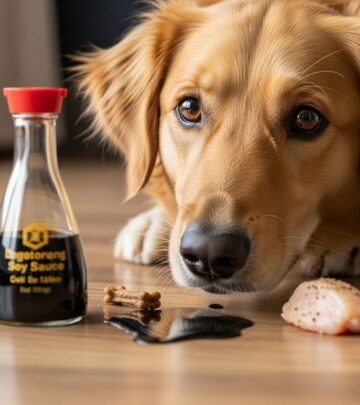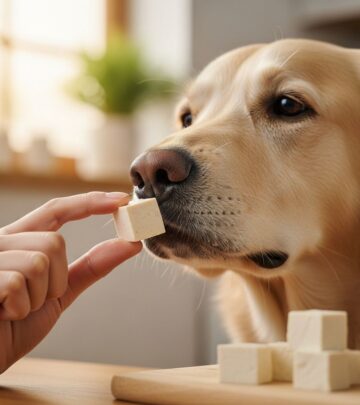Hot Spots On Dogs: 3 Causes, Treatments, And Home Remedies
Soothe irritated skin swiftly with effective tips and natural solutions for pets today!

Image: HearthJunction Design Team
Hot Spots on Dogs: Causes, Treatment, and Home Remedies
Out of all the possible skin conditions in dogs, hot spots are among the most common and concerning for pet owners. These painful, irritated patches can appear suddenly and cause significant discomfort for your furry friend. Hot spots on dogs can have different underlying causes and treatments based on severity, but with proper care, they can be effectively managed and prevented.
Here’s everything you need to know about dog hot spots—from what they are and what causes them to how to treat and prevent them from recurring.
What Is a Hot Spot on a Dog?
Hot spots, medically known as acute moist dermatitis or pyotraumatic dermatitis, are localized areas of skin inflammation and infection that appear as red, moist, irritated patches. These spots are typically painful, itchy, and can develop very quickly—sometimes in just a matter of hours. Unlike some other skin conditions that develop slowly, hot spots can seemingly appear overnight, which is why they often alarm pet owners.
Hot spots occur when your dog damages their skin by excessive scratching, licking, or chewing of a particular area. This self-trauma damages the skin barrier, allowing bacteria naturally present on the skin to multiply and cause an infection. The resulting lesion is often circular, inflamed, oozing, and may have a foul odor due to the bacterial infection.
Common locations for hot spots include:
- The neck
- Behind or at the base of the ears
- The rump area
- The hips
- The trunk of the body
- The feet and forearms
What Causes Hot Spots on Dogs?
Most hot spots on dogs are caused by an underlying condition that either causes itchiness, excessive licking, or excessive moisture. Understanding the root cause is crucial for effective treatment and prevention. Here are the common triggers:
Allergies
Dogs can suffer from various allergies, including food allergies and inhalant allergies (like pollen, dust, or mold). These allergies cause itching, leading dogs to scratch, lick, or chew at their skin, potentially creating hot spots.
Insect Bites and Parasites
Reactions to bites from fleas, mites (such as Sarcoptes or Cheyletiella), or other small insects (like caterpillars, bees, wasps, lice, gnats, or mosquitoes) can cause intense itching. Flea allergy dermatitis is particularly common and can trigger severe reactions even from a single flea bite in sensitive dogs.
Ear Infections
Bacteria or yeast in the ear canal can be extremely irritating, causing dogs to scratch at their ears. This scratching can create hot spots on the ear flap, behind the ear, or on the neck area.
Poor Grooming
Dogs with thick, dense coats or those who aren’t groomed regularly can develop matted fur. These mats prevent air from reaching the skin and can trap moisture after swimming or bathing. The resulting damp environment creates ideal conditions for bacterial growth and hot spot formation.
Moisture
Dogs that swim frequently, are bathed often without proper drying, or live in humid environments may develop hot spots due to moisture trapped in their coats. This is especially common in breeds with thick double coats.
Boredom and Stress
Just like humans develop nervous habits, bored or anxious dogs may excessively lick or chew on themselves as a way to cope. This behavior can damage the skin and lead to hot spots, particularly on areas that are easily accessible like the feet and forearms.
Underlying Skin Conditions
Primary skin infections caused by bacteria or yeast (pyoderma) may prompt the dog to scratch an area excessively, leading to secondary hot spot formation.
Orthopedic Problems
Dogs with joint pain or mobility issues may spend more time lying down, which can create pressure points where hot spots may develop, especially if the dog’s bedding is not clean and dry.
Anal Gland Inflammation
Problems with the anal glands can cause discomfort, leading dogs to lick or chew at their rear end and potentially develop hot spots in that area.
Symptoms of Hot Spots in Dogs
Hot spots have several characteristic signs that make them relatively easy to identify. Look for these symptoms if you suspect your dog has developed a hot spot:
- Red, inflamed skin
- Moist, oozing lesions
- Hair loss over the affected area
- Intense itching or pain
- Excessive licking, chewing, or scratching of the area
- Unpleasant odor from the affected area
- Visible discomfort or changes in behavior due to pain
- Crusting or scabbing as the lesion progresses
It’s important to note that hot spots can grow rapidly, sometimes expanding by several inches in just a few hours if the dog continues to lick and chew at the area. This is why prompt treatment is essential.
How to Treat Hot Spots on Dogs
Treating hot spots requires a multi-faceted approach to address both the immediate infection and the underlying cause. Here’s a breakdown of common treatment methods:
Veterinary Treatment
For moderate to severe hot spots, professional veterinary care is recommended. Your veterinarian may:
- Clip and clean the area: The first step in treatment involves removing hair around the hot spot and thoroughly cleaning the area. Your vet will typically clip away the fur to expose the entire lesion and then clean it with an antiseptic solution like chlorhexidine to remove bacteria and debris.
- Prescribe medications: Depending on the severity, your vet may prescribe:
- Oral antibiotics to fight infection
- Anti-inflammatory medications like prednisone or Apoquel to reduce inflammation and itching
- Topical treatments such as sprays, ointments, or medicated wipes containing hydrocortisone or other anti-inflammatory agents
- Drying agents like 2% aluminum acetate to help dry out the moist lesion
- Prevent further self-trauma: An Elizabethan collar (cone) may be necessary to prevent your dog from continuing to lick or scratch the area while it heals.
Home Care for Hot Spots
For very mild cases, or as part of follow-up care after veterinary treatment, you might use these approaches:
- Keep the area clean: Gently clean the hot spot with a mild antiseptic solution recommended by your veterinarian.
- Apply prescribed topical treatments: Follow your vet’s instructions regarding any creams, sprays, or solutions they’ve prescribed.
- Prevent licking and scratching: Maintain use of the Elizabethan collar or explore alternatives like soft cones or recovery suits if recommended by your vet.
- Monitor healing: Watch for signs of improvement or worsening and report any concerns to your veterinarian.
Home Remedies
While veterinary care is usually necessary for hot spots, some gentle supportive measures may help mild cases or complement professional treatment:
- Cool compresses to soothe irritated skin
- Gentle cleaning with diluted antiseptic solutions (only as recommended by your vet)
- Ensuring your dog has a clean, dry place to rest
Important: Always consult with your veterinarian before attempting any home treatments, as inappropriate remedies can worsen the condition.
How to Prevent Hot Spots on Dogs
Prevention is the best approach to hot spots. Here are strategies to reduce the risk of recurrence:
Regular Grooming
Proper grooming is essential, especially for dogs with thick or long coats. Regular brushing removes loose fur, prevents matting, and distributes natural oils throughout the coat. For dogs that swim or get wet frequently, ensure they’re thoroughly dried afterward to prevent moisture from being trapped against the skin.
Parasite Control
Maintain a year-round flea and tick prevention program as recommended by your veterinarian. Even one flea bite can trigger an allergic reaction in sensitive dogs.
Allergy Management
If your dog has known allergies, work with your veterinarian to manage them effectively. This might include special diets, medications, or environmental changes to minimize exposure to allergens.
Address Underlying Conditions
Promptly treat any ear infections, skin conditions, or other health issues that might cause your dog to scratch or lick excessively.
Environmental Enrichment
Provide plenty of exercise, mental stimulation, and attention to prevent boredom-related licking and chewing. Interactive toys, regular walks, and training sessions can help keep your dog mentally engaged.
Clean Living Areas
Keep your dog’s bedding, toys, and living areas clean and dry to reduce bacterial growth and skin irritation.
When to See a Vet
While very mild hot spots might respond to home care, most require veterinary attention. Contact your veterinarian if:
- The hot spot is larger than a quarter
- Your dog appears to be in significant pain
- The area is rapidly expanding
- Your dog has multiple hot spots
- There’s excessive discharge or a strong odor
- Your dog has recurring hot spots
- Your dog has other symptoms like lethargy, fever, or decreased appetite
Frequently Asked Questions (FAQs)
Q: Can hot spots kill a dog?
A: Although hot spots are very uncomfortable, it would be extremely rare for one to kill an otherwise healthy dog. However, untreated hot spots can lead to widespread skin infections that could potentially become serious, especially in dogs with compromised immune systems.
Q: How long do hot spots take to heal?
A: With proper treatment, most hot spots begin to improve within 48-72 hours. Complete healing typically takes 7-14 days, depending on the severity of the lesion and how effectively the underlying cause is addressed.
Q: Are certain dog breeds more prone to hot spots?
A: Yes, breeds with thick double coats like Golden Retrievers, German Shepherds, Labrador Retrievers, and Saint Bernards are more susceptible to hot spots. Dogs with underlying allergies or those that live in humid environments are also at higher risk.
Q: Can I use human first aid products on my dog’s hot spot?
A: It’s not recommended to use human products without veterinary guidance. Many human medications can be toxic to dogs or may contain ingredients that could further irritate the hot spot. Always consult your veterinarian before applying any treatment.
Q: What is the best hot spot treatment for dogs?
A: There’s no one-size-fits-all treatment for hot spots, as the approach depends on severity and underlying causes. Your veterinarian will help select the best treatment plan for your dog, which typically includes shaving and cleaning the wound, preventing further licking and biting, and using appropriate medications to make the area more comfortable and promote healing.
Q: Can I prevent hot spots if my dog loves to swim?
A: Yes, you can still allow your water-loving dog to swim while minimizing hot spot risks. The key is thorough drying afterward—use towels to remove excess water and consider a pet-safe blow dryer on a cool setting for dogs with thick coats. Regular grooming to prevent matting and promptly addressing any signs of skin irritation will also help.
Remember that hot spots, while uncomfortable for your dog, are usually manageable with proper care. By understanding the causes and taking preventive measures, you can help keep your furry friend’s skin healthy and hot spot-free. If your dog does develop a hot spot, prompt veterinary attention will ensure the fastest resolution and return to comfort.
References
Read full bio of Srija Burman












